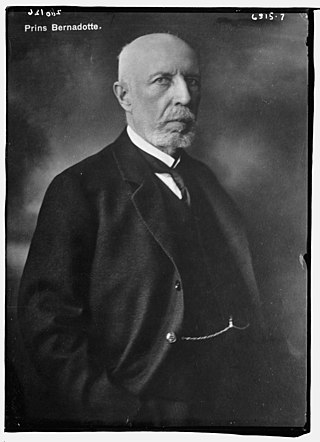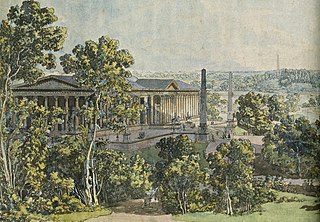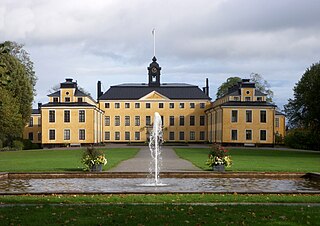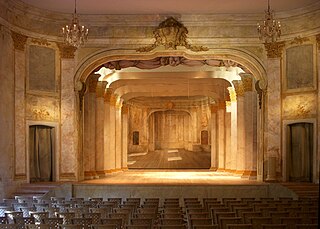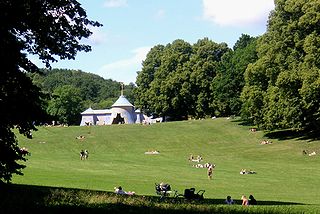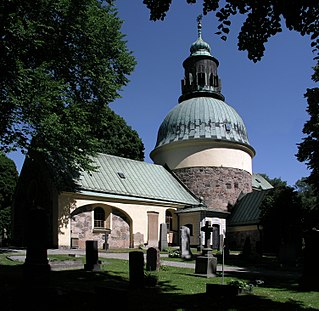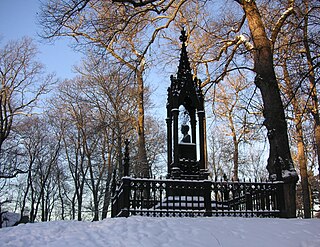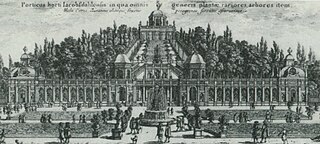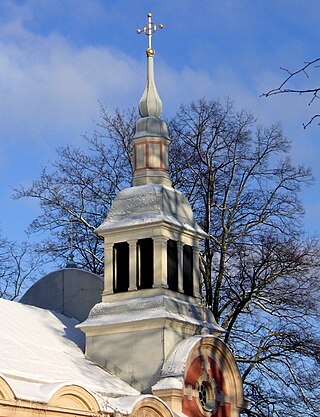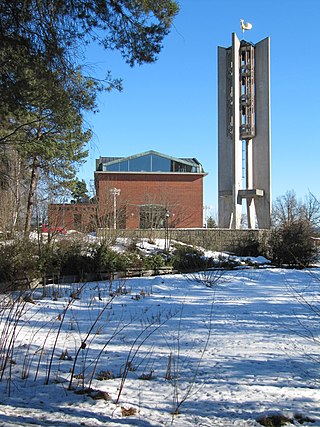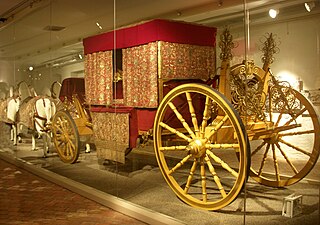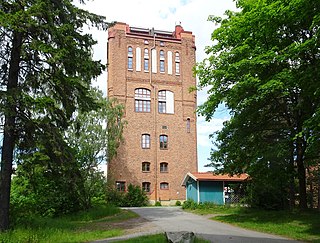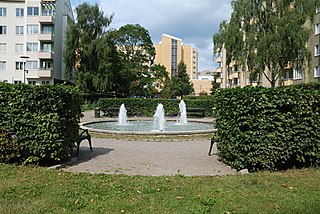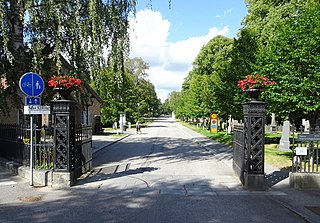14 Sights in Solna, Sweden (with Map and Images)
Legend
Welcome to your journey through the most beautiful sights in Solna, Sweden! Whether you want to discover the city's historical treasures or experience its modern highlights, you'll find everything your heart desires here. Be inspired by our selection and plan your unforgettable adventure in Solna. Dive into the diversity of this fascinating city and discover everything it has to offer.
Sightseeing Tours in Solna1. prins Oscar Bernadottes familjegrav
Prince Oscar Carl August Bernadotte, Count of Wisborg was a Swedish religious activist, the second son of King Oscar II of Sweden and his consort, Sofia of Nassau. Born as a Prince of Sweden and Norway, he was known as Prince Oscar, Duke of Gotland. However, by marrying contrary to Swedish constitutional requirements, he lost those titles, becoming instead Luxembourgish nobility as Prince Bernadotte and Count of Wisborg.
2. Haga Palace ruins
Haga Castle Grounds or Stora Haga Castle Ruins are the remains of Gustav III's grand plan for Stora Haga Castle in Haga Park. No less than six architects were involved in the commission to design the castle. The construction did not get more than the foundation before the king was assassinated in March 1792 and construction came to a halt. Today, only the castle's basement walls remain.
3. Ulkriksdal's Castle
Ulriksdal Palace is a royal palace situated on the banks of the Edsviken in the Royal National City Park in Solna Municipality, 6 km north of Stockholm. It was originally called Jakobsdal for its owner Jacob De la Gardie, who had it built by architect Hans Jacob Kristler in 1638–1645 as a country retreat. He later passed on to his son, Magnus Gabriel De la Gardie, from whom it was purchased in 1669 by Queen Hedvig Eleonora of Sweden. The present design is mainly the work of architect Nicodemus Tessin the Elder and dates from the late 17th century.
4. Confidencen
Confidencen, or Ulriksdal Palace Theatre, is a theatre in the park of Ulriksdal Palace in Solna, in the Swedish capital Stockholm. Built in the 1750s and restored from the late 20th century, it is the oldest Rococo theatre in Sweden.
5. Pelouse
Hagaparken's pelouse, or Stora pelousen for short, is the large lawn in Haga Park in Solna. "Pelouse" is French and means lawn or grass field. The Haga Park pelouse, which is surrounded by walking paths on four sides, is about 300 meters long and 200 meters wide with an area of about 6.0 hectares. Stora pelousen, like the entire Haga Park, has been part of the National City Park Stockholm-Solna since 1994.
6. Solna kyrka
Solna Church is a so-called round church in Solna Municipality near Stockholm, Sweden. It is part of Solna Parish in the Diocese of Stockholm. The church is located on the headland between Brunnsviken and Ulvsundasjön, at the southern end of the cemetery Norra begravningsplatsen. The oldest parts of the church are from the later 12th century, a Romanesque fortress church built in stone.
7. Prins Gustafs monument
Prince Gustaf's monument is a monument to Prince Gustaf, the prince of singers, which can be found in the northern part of Haga Park, not far from Haga Palace in Solna municipality. The monument was erected in 1854 on the initiative of the Royal Academy of Music. Gustaf had died in 1852 at the age of only 25, but had managed to set "Studentsången" and several other songs to music.
8. Orangerimuseet
The Orangery Museum is a sculpture museum in the Ulriksdal Castle area, Solna Municipality. The building's predecessor was built in the 1660s. The current orangery was added in the early 1700s and was designed by Nicodemus Tessin the Younger. In 1988, King Carl XVI Gustaf decided to let the orangery as a sculpture museum. The Orangery is open during the summer months for guided tours.
9. Ulriksdals slottskapell
Ulriksdal Palace Chapel was built on the initiative of Karl XV in 1863-1865 at Ulriksdal Palace. It has been preceded by at least two other chapels, the first of which was decorated as early as the 1660s, when Magnus Gabriel De la Gardie owned the castle. This chapel was housed in the north wing of the castle and built according to the designs of Jean de la Vallée. The castle chapel is currently used for weddings, confirmation services, school graduations and baptisms, among other things.
10. Råsunda kyrka
Råsunda church is a district church in Solna parish and is located on a hill at Näckrosparken. Until 2007, the church was a parish church in Råsunda parish. Not so far away is the film town in Råsunda.
11. Museum of Queen Kristina's coronation carriage
The Museum of Queen Kristina's Coronation Carriage is a museum in the stable building on Ulriksdal Palace grounds, Solna Municipality. The museum displays, among other things, the reconstructed coronation body from Queen Kristina's coronation on 20 October 1650. The stable with the coronation carriage is open for booked group visits.
Wikipedia: Museet för drottning Kristinas kröningsekipage (SV)
12. Råsunda vattentorn
The Råsunda water tower is located at Näckrosvägen 31A in the district of Råsunda in Solna municipality. The tower was designed by architect Sigge Cronstedt and inaugurated in 1910. Operations were suspended in the early 1950s. Since 1994, the tower has been converted into apartments. The exterior of the building is very well preserved and has a high cultural-historical value.
13. Eric Grates park
Erik Grates Park is a park located on Centralvägen opposite Solna city centre in the district of Skytteholm in Solna Municipality. The park was named in 1993 after the sculptor Eric Grate, who spent his last fifteen years in Solna. The park today (2011) contains three sculptures by Grate:Oberon. 1953-54, bronze. Nike de Sant Andria. 1968, bronze. The sparrow god. 1972-73, bronze.
14. Norra kapellet
The Northern Cemetery is one of Sweden's largest cemeteries and is managed by the City of Stockholm. It is located in Solna municipality, about 1 kilometer northwest of Norrtull in Stockholm's inner city. The cemetery is bounded by the Uppsalavägen E4 motorway to the east, Solna kyrkväg to the south, Banvaktsvägen, Källvägen and Spitsgatan to the west and Hagavägen to the north. Within the area there are some main thoroughfares, such as Linvävarvägen, Stora Gravkorets väg, Norra Krematoriets väg, Aftonstjärnans väg, Morgonstjärnans väg, Sommarvindsvägen, Vårvindsvägen, Ljuslågevägen, Solglimtsvägen, Solregnsvägen and Klockarbacksvägen.
Share
How likely are you to recommend us?
Disclaimer Please be aware of your surroundings and do not enter private property. We are not liable for any damages that occur during the tours.
